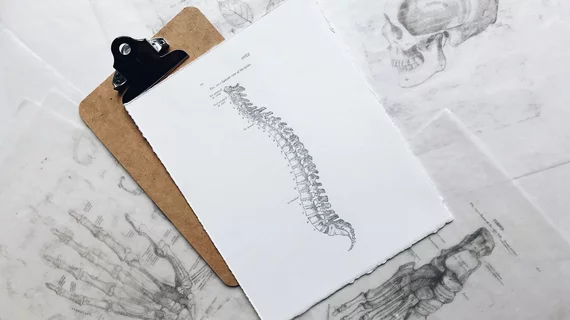Using fracture line features in conjunction with radiomic features on spinal CT scans, researchers were able to accurately distinguish between acute and chronic vertebral fractures in patients with osteoporosis.
Vertebral fractures in elderly patients decrease quality of life and increase mortality risk when not diagnosed and treated promptly. However, distinguishing acute from chronic fractures can be challenging.
MRI offers detailed visualization of spinal fractures but due to the length of the exam and the discomfort patients endure during imaging, their clinical utility can be limited. CT scans are easily obtained but inferior to MRI in differentiating between acute and chronic fractures.
This is what led researchers to hypothesize that radiomics could pose as a solution to osteoporotic fracture detection.
“Radiomics can extract high throughput features of the segmented regions and further be selected to model development for quantitatively analyzing the lesion heterogeneity,” corresponding author Jian Qin, with the Department of Radiology at the Second Affiliated Hospital of Shandong First Medical University in China, and coauthors wrote Feb. 5 in the European Journal of Radiology.
Using the features extracted from the CT and MRI scans of 147 patients, researchers were able to develop a radiomic signature that could differentiate between fracture timelines with great predictive ability. They created a radiomics-only model in addition to a radiomics-clinical model that incorporated clinical features into their signature.
The experts were able to use the information derived from the radiomics model to identify 14 different imaging features of acute and chronic spinal fractures. Using these features yielded an area under the curve (AUC) of 0.90 in a training set and 0.82 in the validation set.
In addition, the combined model that was developed using the radiomic signature and clinical fracture line feature resulted in an even higher AUC of .93, respectively.
“Our results showed that the proposed nomogram based on radiomic signature and clinical fracture line had potential ability in distinguishing acute and chronic osteoporotic vertebral fractures, and it displayed excellent ability,” the experts noted.
They go on to suggest that their findings could be especially beneficial in guiding treatment decisions when MRI is not available.
You can view the detailed research in the here.

